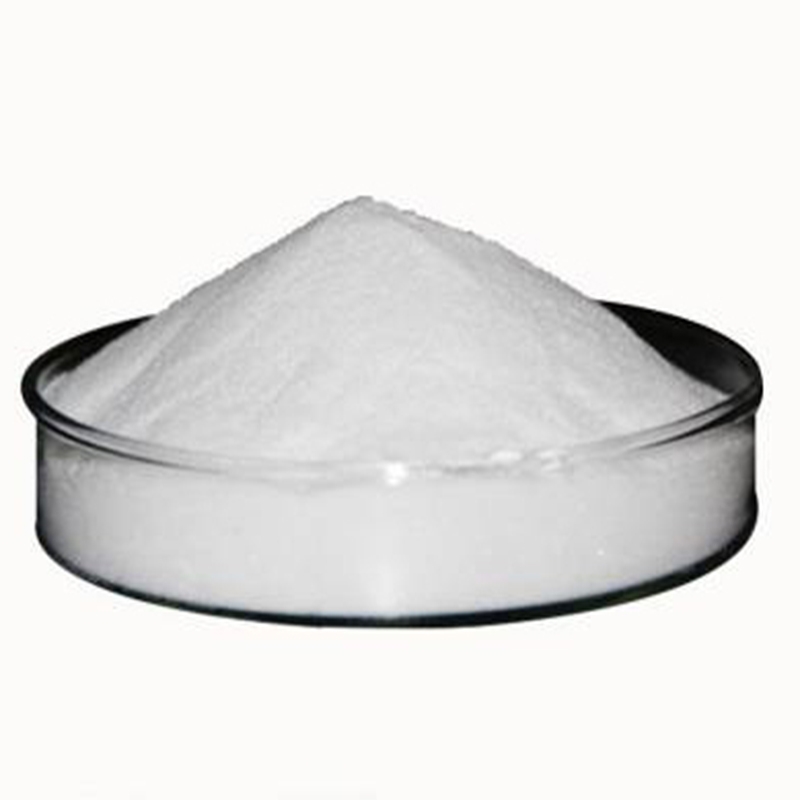-
Categories
-
Pharmaceutical Intermediates
-
Active Pharmaceutical Ingredients
-
Food Additives
- Industrial Coatings
- Agrochemicals
- Dyes and Pigments
- Surfactant
- Flavors and Fragrances
- Chemical Reagents
- Catalyst and Auxiliary
- Natural Products
- Inorganic Chemistry
-
Organic Chemistry
-
Biochemical Engineering
- Analytical Chemistry
-
Cosmetic Ingredient
- Water Treatment Chemical
-
Pharmaceutical Intermediates
Promotion
ECHEMI Mall
Wholesale
Weekly Price
Exhibition
News
-
Trade Service
Recently, Professor Bao Jinsong's team at the College of Agronomy of Zhejiang University conducted the Journal of Agricultural and Food Chemistry, Carbohydrate Polymers and Internatio The nal Journal of Molecular Sciences and other journals published three research papers to reveal the molecular mechanism of rice starch branching enzyme IIb (BEIIb) mutant (be2b) with increased yield decrease, the formation mechanism of fine structure of resistant starch and the molecular mechanism
of resistant starch biosynthesis.
of resistant starch biosynthesis.
Rice is one of
the most important food crops in our country.
Starch is the main component of rice endosperm, accounting for about 90% of the dry weight of polished rice, and is mainly composed of
amylose and amylopectin.
Studies have shown that the intake of rice with moderate amounts of highly resistant starch can prevent a sharp rise in blood sugar levels after meals, and play a positive role in preventing diabetes, obesity and chronic bowel disease
.
However, the content of resistant starch in ordinary rice varieties is very low (<2%), and the analysis of the formation mechanism of rice high resistance starch has an important guiding role
in the creation of high resistance starch rice varieties.
the most important food crops in our country.
Starch is the main component of rice endosperm, accounting for about 90% of the dry weight of polished rice, and is mainly composed of
amylose and amylopectin.
Studies have shown that the intake of rice with moderate amounts of highly resistant starch can prevent a sharp rise in blood sugar levels after meals, and play a positive role in preventing diabetes, obesity and chronic bowel disease
.
However, the content of resistant starch in ordinary rice varieties is very low (<2%), and the analysis of the formation mechanism of rice high resistance starch has an important guiding role
in the creation of high resistance starch rice varieties.
The BEIIb gene is an important gene
that affects the content of resistant starch.
CRISPR/Cas9 gene editing was used to obtain the rice Japanese sunny BEIIb mutant (be2b), which increased its resistant starch content by nearly 10 times and amylose content by 1.
4 times
compared with wild-type WT.
However, the mutant's thousand grain weight decreased
significantly.
Multi-omics analysis showed that upregulation of the expression of enzymes such as AMY2A and Pho in be2b endosperm induced starch degradation, while the upregulation of glycolysis-related proteins stimulated the redistribution
of carbohydrates through 3-phosphoglycerate for energy substances.
Upregulation of expression by enzymes such as SUS, UGP2, and malZ leads to the accumulation
of sucrose, glucose, and fructose.
The upregulation of enzymes such as PK, ALT, GLEN and GOT led to the accumulation of amino acids and tricarboxylic acid cycle intermediates, among which the content of citric acid and isocitric acid was 21.
2 times that of wild type, which significantly reduced the conversion efficiency
of energy substances in be2b.
In addition, the downregulation of a series of enzymes related to acetyl-CoA synthesis further reduces the efficiency
of energy conversion into stored matter.
Therefore, these effects work together to lead to a significant decrease
in 1,000 grain weight after BEIIb mutation.
that affects the content of resistant starch.
CRISPR/Cas9 gene editing was used to obtain the rice Japanese sunny BEIIb mutant (be2b), which increased its resistant starch content by nearly 10 times and amylose content by 1.
4 times
compared with wild-type WT.
However, the mutant's thousand grain weight decreased
significantly.
Multi-omics analysis showed that upregulation of the expression of enzymes such as AMY2A and Pho in be2b endosperm induced starch degradation, while the upregulation of glycolysis-related proteins stimulated the redistribution
of carbohydrates through 3-phosphoglycerate for energy substances.
Upregulation of expression by enzymes such as SUS, UGP2, and malZ leads to the accumulation
of sucrose, glucose, and fructose.
The upregulation of enzymes such as PK, ALT, GLEN and GOT led to the accumulation of amino acids and tricarboxylic acid cycle intermediates, among which the content of citric acid and isocitric acid was 21.
2 times that of wild type, which significantly reduced the conversion efficiency
of energy substances in be2b.
In addition, the downregulation of a series of enzymes related to acetyl-CoA synthesis further reduces the efficiency
of energy conversion into stored matter.
Therefore, these effects work together to lead to a significant decrease
in 1,000 grain weight after BEIIb mutation.
The study of the fine structure of starch during endosperm development during the filling period of indica be2b mutant found that be2b endosperm had higher amylose content and more amylopectin long chains than wild-type (WT) at all stages of development, which could form higher resistant starch content
.
The be2b starch crystal structure changed from type C 5 and 10 days after flowering to type B 15 days after flowering, while WT was type
A at all stages of development.
Compared to starches A and C, starch type B typically has longer amylopectin side chains and larger branch point spacing, resulting in higher digestion resistance
.
However, during the development process, the content of amylose and the ratio of amylopectin A chain in WT and be2b gradually increased, while the B2, B3 chain and average chain length gradually decreased
.
.
The be2b starch crystal structure changed from type C 5 and 10 days after flowering to type B 15 days after flowering, while WT was type
A at all stages of development.
Compared to starches A and C, starch type B typically has longer amylopectin side chains and larger branch point spacing, resulting in higher digestion resistance
.
However, during the development process, the content of amylose and the ratio of amylopectin A chain in WT and be2b gradually increased, while the B2, B3 chain and average chain length gradually decreased
.
During starch biosynthesis, enzymes related to starch synthesis interact to form multi-enzyme complexes to function
.
Further studies have found that with the development of endosperm, the number of complexes formed in WT endosperm gradually increases 10 days after flowering, and the complex gradually increases 10 and 15 days after flowering, which contributes to the efficient synthesis
of starch.
However, the number of protein complexes in each period of be2b is significantly smaller than WT, and the molecular weight of the complex is also significantly smaller, which hinders the effective synthesis of starch and forms starch with structural variation, but the digestion resistance of this starch is improved
.
.
Further studies have found that with the development of endosperm, the number of complexes formed in WT endosperm gradually increases 10 days after flowering, and the complex gradually increases 10 and 15 days after flowering, which contributes to the efficient synthesis
of starch.
However, the number of protein complexes in each period of be2b is significantly smaller than WT, and the molecular weight of the complex is also significantly smaller, which hinders the effective synthesis of starch and forms starch with structural variation, but the digestion resistance of this starch is improved
.
The research results were completed in cooperation with Jiangxi Normal University and Guangxi Academy of Agricultural Sciences, and were supported
by the National Natural Science Foundation of China and the Natural Science Foundation of Zhejiang Province.
At present, the team is using a variety of technical means to find BEIIb regulators and new interaction proteins, in order to develop rice varieties
with higher resistance starch.
by the National Natural Science Foundation of China and the Natural Science Foundation of Zhejiang Province.
At present, the team is using a variety of technical means to find BEIIb regulators and new interaction proteins, in order to develop rice varieties
with higher resistance starch.
Links to papers:
1.
Chen Y, Luo L, Xu FF, Xu X, Bao JS (2022) Carbohydrate repartioning in rice starch branching enzyme IIb mutant stimulates higher resistant starch co ntent and lower seed weight revealed by multi-omics analysis.
Journal of Agricultural and Food Chemistry, 70(31): 9802–9816.
https://doi.
org/10.
1021/acs.
jafc.
2c03737
Chen Y, Luo L, Xu FF, Xu X, Bao JS (2022) Carbohydrate repartioning in rice starch branching enzyme IIb mutant stimulates higher resistant starch co ntent and lower seed weight revealed by multi-omics analysis.
Journal of Agricultural and Food Chemistry, 70(31): 9802–9816.
https://doi.
org/10.
1021/acs.
jafc.
2c03737
2.
Ying Y, Zhang Z, Tappiban P, Xu FF, Deng GF, Dai GX, Bao JS (2022) Starch fine structure and functio nal properties during seed development in BEIIb active and deficient rice.
Carbohydrate Polymers, 29, 119640.
https://doi.
org/10.
1016/j.
carbpol.
2022.
119640
Ying Y, Zhang Z, Tappiban P, Xu FF, Deng GF, Dai GX, Bao JS (2022) Starch fine structure and functio nal properties during seed development in BEIIb active and deficient rice.
Carbohydrate Polymers, 29, 119640.
https://doi.
org/10.
1016/j.
carbpol.
2022.
119640
3.
Ying Y, Xu FF, Zhang Z, Tappiban P, Bao JS.
(2022) Dynamic change in starch biosynthetic enzymes complexes during grain-filling stages in BEIIb active and deficient rice.
International Journal of Molecular Sciences, 23,10714.
https://doi.
org/10.
3390/ijms231810714
Ying Y, Xu FF, Zhang Z, Tappiban P, Bao JS.
(2022) Dynamic change in starch biosynthetic enzymes complexes during grain-filling stages in BEIIb active and deficient rice.
International Journal of Molecular Sciences, 23,10714.
https://doi.
org/10.
3390/ijms231810714







